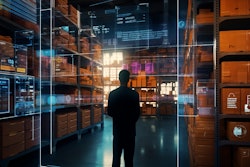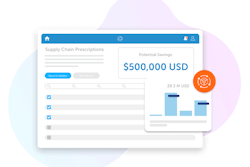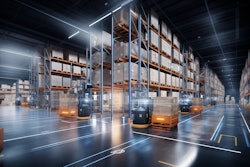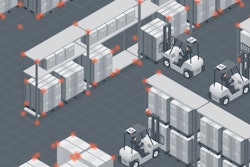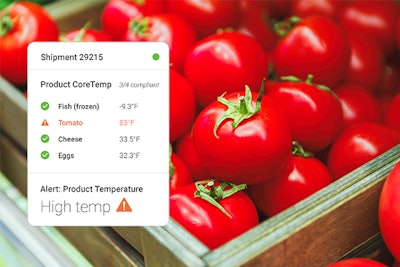
Emerging technologies are reshaping the future of supply chain. It’s these disruptive technologies that are altering the way organizations do business. They’re creating alternative means of connecting data, providing visibility, enforcing safety and more.
Food Logistics talks exclusively with Travis Ross, solutions manager, cold chain and reefer, EROAD, about how leveraging data in real-time represents a significant advantage for carriers navigating the complexities of the modern logistics landscape.
CLICK HERE to read the article in full.
Food Logistics: Emerging technologies are on the rise, everything from AI and IoT to cloud-based, digital transformation and future-proofing the supply chain. What do think is attributing to the growth in adoption of emerging technologies?
Travis Ross: Over the past five years, two key factors have significantly contributed to the increasing adoption of emerging technologies in the logistics industry. First, shippers are increasingly leveraging technology and data to drive substantial cost savings across their carrier networks. This emphasis on utilizing data extends to fostering sustainable practices, a growing trend that is becoming more straight forward with the availability of data driven insights. For example, having the ability to quickly analyze energy consumption patterns in seconds enables shippers to effectively scale sustainable practices.
Second, the challenge of staffing their business has prompted carriers to turn to technology to streamline operations. With the difficulty of hiring qualified employees expected to persist, the ability to access and interpret data rapidly is huge for carriers! Imagine if I were a frontline leader for a broadline carrier and could instantly identify operational inefficiencies such as excessive energy consumption due to a factor like over-precooling. With a simple click, I could access critical data points like incorrect set points, low fuel levels, unhealthy trailers, the list goes on. The ability to leverage data in real-time represents a significant advantage for carriers navigating the complexities of the modern logistics landscape.
Food Logistics: What kinds of emerging technologies has your company introduced within the last 12 months? Anything on the horizon that will be introduced soon?
Ross: We continue to make significant developments to CoreTemp, our solution that monitors core product temperatures and uses artificial intelligence (AI) to drive actionable insights like early multi-layered temperature warnings, alerts per compartment, real-time route breakdowns, and performance scores. These advancements are disrupting how some of the largest North American brands are improving operational practices, quality standards, and minimizing product loss and damage.
Our predictive reefer shutdown solution, powered by machine learning, continues to advance significantly, providing carriers with precise insights into the future condition of their refrigerated trailers over the next seven days. These insights are derived from a comprehensive analysis of alarm history, utilization data, and other relevant factors, progressing our ongoing mission to enable carriers to operate their fleets with optimal efficiency.
Most recently, EROAD announced it is working with Microsoft on generative AI development to enhance and provide added value to the customer experience. By partnering with Microsoft and leveraging GitHub Copilot, several features are scheduled to launch over the next six months:
· AI-powered dashboards that can generate interactive and customizable reports and insights based on user preference and feedback.
· AI-powered voice assistants that can provide hands-free and conversational access to EROAD’s products and services, such as navigation, alerts and analytics.
Food Logistics: What advice do you have for those companies who haven’t implemented any form of emerging tech whatsoever or are just starting the journey? Where/how should they start?
Ross: The first step is to cultivate a willingness to delve into the operational details. While technology generates data that may initially reveal challenges, that data is always actionable, offering opportunities for significant improvements to profit and loss (P&L). Once willingness is established, it’s crucial to invest time in researching the best industry partners who can assist in optimizing key performance indicators (KPIs) related to cold chain. These KPIs include metrics such as energy consumption, maintenance expenditures, and mitigating the dreaded product loss and damage (PL&D).
One last piece of advice to someone who may be hesitant or is waiting for the trend to pass, is that the demand for increased visibility and transparency in food quality is only growing stronger – from consumers to production. Therefore, now is a great time to explore and embrace these emerging technologies and their potential benefits for the business!
Food Logistics: How can companies decipher which kinds of emerging technologies are best for their supply chain?
Ross: Start internally! Engage with all operational areas to identify pain points and gather insights. Talk to your fleet managers, transportation managers, supervisors, dispatchers, and warehouse management for valuable input. This important team of internal stakeholders will help ensure you are investing in the technology that matters most. Additionally, seek technology partners who understand your business and its unique set of needs. Prioritize addressing major pain points and conduct thorough research to maximize ROI with minimal investment.
Food Logistics: What are some things not addressed above that may be pertinent to our cold food chain readers?
Ross: Many operators may perceive the current situation as a simultaneous influx of challenges across all fronts. In the past, the primary focus was solely on the timely delivery of groceries. However, today’s landscape demands a more sustainable approach to delivery operations, presenting a considerable challenge for those engaged in the last-mile delivery segment. It is important to focus on the well-being and efficiency of frontline workers, who serve as the linchpin for KPIs. Streamlining the adoption of new technologies and reframing perceptions around environmentally conscious practices are essential steps toward navigating this evolving industry landscape.
CLICK HERE to read the article in full.





